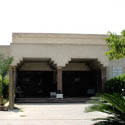
It was the ancient Egyptian artist who was the first to come up with batik. During the Ptolemaic era, during which Alexandria established itself as the civilized world’s center of culture and art, Egypt-made batik reached a peak and had a tremendous popularity. The Roman craftsmen did not show less interest in the Egyptian batik. Rather, fascinated with the craft, they imported wool and silk from India to produce impressive pieces. However, Coptic artisan, took his eyes off the Roman batiks, which illustrated landscapes. They instead were inspired instead by icons illustrating people and animals. Muslim craftspeople on the other hand replaced Coptic icons with geometric, floral, and animal patterns an drawings. The industry, moreover, prospered after Muslim Caliphs sponsored gifted craftspeople, encouraging them to innovate their designs and techniques. However, batik underwent chaotic circumstances under the Ottoman ruling for different reasons. That was why the House of Batiks in Helwan was established in 1970 to help revive the Egyptian craft and restore its glory. The decision was made by the former Minister of Culture Tharwat Ukasha. The house is also equipped to inspire the curiosity of youth talents about their ancestors’ industry and its characteristic features and technique. Batik exhibitions are also held at home and broad. The House of Batiks in Helwan conducts its commitments through its four departments: design and drawing, training, operation workshop and dying department.
In 1994, Minister of Culture artist Farouk Hosni opened the House of Batiks in Helwan after it underwent successful renovation and upgrading programmes (initiated in 1987), which included the opening of seminar hall and cultural activities.